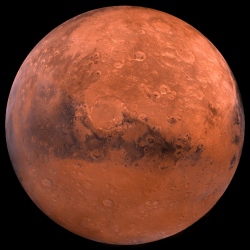
The Curiosity rover has been on Mars for three years. To mark the occasion, NASA has released two tools designed to both educate the public and help scientists select future landing sites. The tools allow visitors to learn more about Curiosity and explore the Martian surface with a virtual tour.
The first tool is the Mars Trek, which was developed by NASA’s Lunar Mapping and Modeling Project. It’s a browser-based app that provides detailed interactive maps of Mars, drawing on data from missions going back to the 1960s. Using standard gaming keyboard commands, users can zoom in and out, select various map projections, and add layers from a range of data sets collected by orbiters over the years.
In addition, there are downloadable 3D printer files, so users can print out their own Martian topography. NASA says that Mars Trek is also being used by space agency scientists to help select the landing site for the Mars 2020 mission as well as possible landing sites for a manned mission in the 2030s.
Experience Curiosity is also browser based, but instead of being an interactive map, this app allows users to go on a 3D drive with Curiosity over the Martian landscape. Providing zoomable and rotatable views, Experience Curiosity uses a virtual landscape based on images from Curiosity and the Mars Reconnaissance Orbiter (MRO).
The app lets users manipulate a virtual Curiosity rover, learn about its various components, steer it between a selection of mission waypoints, and select views from Curiosity’s navigation and mast cameras.
The unmanned Curiosity rover landed on Mars on August 6, 2012 at the Bradbury Landing site. Its 687-day mission was to study the geology and climate of the Red Planet in the vicinity of Gale Crater with a special emphasis for seeking areas where life could or once could have harbored life. It is now carrying out an extended mission that’s heading into its fourth year.
